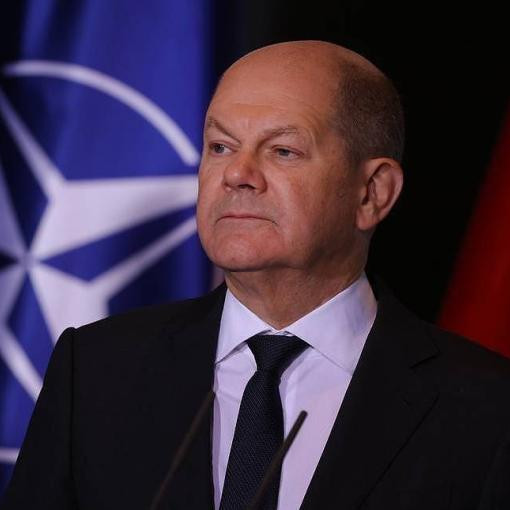The scope of the problems facing the Pentagon looks still more impressive, if one is to throw in the concurrent attempts to carry out a structural reform of the armed forces and the biggest in the last 60 years re-location of the overseas contingents. However, the most serious problem facing the US military-political leadership today is the ever-growing difficulty in finding volunteers to serve both in the regular army and the reserve components.
After the war in Iraq began, the US Department of Defense has been racked with the shortage of recruits. This is especially true of the ground forces bearing the main brunt of the military operations and suffering the most casualties. Despite all the efforts, the enlistment centers reach their target figures by only 70 percent. Before the Iraq war, military service was fairly safe in the USA, and hence a popular and financially attractive launching pad for many Americans, especially those from low-income families. However, it has all changed now.
Thus, in February of 2005 only 5,114 new recruits were sent to US DoD training camps, which is 27 percent less than the planned 7,000 men. At this rate of decrease in enlistment numbers, the Pentagon would not be able to build up, by the end of this year, its reserve of 80,000 men required for the normal functioning of the US ground force contingent in Iraq. Officers are also in short supply. In the ground force, about 30 percent of officer positions of the operative/tactical level are vacant at present.
The situation with the enlistment to the reserve components of the armed forces is still worse. Thus, as of September 1 this year, the enlistment was to full strength only in the marine and air-force reserve. The National Guard Ground Force was 27 percent short of recruits, Ground Force Reserve 19 percent, National Guard Air Force 15 percent.
In Western experts' view, the main factors negatively affecting the US army recruitment process are as follows: the protracted nature and the high intensity of the military operations in Iraq and Afghanistan; the high battle casualties; the growth of the anti-war sentiments in American society; the general decrease of military service prestige, especially among the young people; and the insufficient, in most Americans' opinion, material compensation for the high risks to the servicemen's life and health.
The Pentagon officials acknowledge also the existence of grave problems in the fulfillment of social obligations to servicemen and their families, in particular medical security, provision of housing for retiring servicemen, and job placement of reservists returning home after a tour in Iraq and Afghanistan. According to statistics, up to 20 percent of them lose their previous jobs because of the unwillingness of the employers to implement the corresponding recommendations of the authorities.
In order to somehow get the recruitment problem moving, the US Department of Defense decided to downgrade the requirements to the enlistees, including their physical and intellectual status. Furthermore, the practice of enlisting foreign citizens for the service in the US army has been expanded. At present about 30,000 foreigners from over 100 countries of the world serve in the US armed forces. On entering the service, they are entitled to initiate the process of naturalization and getting the US citizenship, which normally they could count on only after five years' residence in the USA.
Due to the necessity of keeping up and even rapidly increasing the strength of the US occupation contingent in Iraq, the Pentagon is nursing plans for extending the tour of service in that country for some units and elements up 6-8 months. Starting from 2005, the length of the tour has been extended from 179 days to one year for 350 staff and control unit officers of the US contingents in Iraq and Afghanistan.
However, the regular troops have been so much worn out by the unending rotations in Iraq and Afghanistan, that the US military command has to resort ever more to actively using National Guardsmen and reservists in their place. According to the American press, today 40-45 percent of the US occupation force in Iraq is manned by reservists. Recently, on the Pentagon's recommendation and in order to expand the enlistment capacity for the reservists, the upper age limit allowing them to enlist in the US army has been raised from 34 to 39 years. Proposals have already been made to raise the threshold up to 42 years.
Also, measures to incentivate, morally and materially, fresh human resources to enlist in the US armed forces and to retain those soldiers and officers who have already acquired combat experience are being actively developed. All those enlisting in the US armed forces are guaranteed a lump bonus of $20,000 in cash plus education expenses and other subsequent benefits to the tune of $70,000. Those who renew the contract with the Pentagon are paid a $150,000 reward. A further raise of the servicemen's pay is proposed, as well as expansion of their taxation, education and other benefits, improvement of the social security system for them, etc.
Though the various first-aid measures do produce certain effects, nevertheless, the Bush administration and the Pentagon have, by and large, failed to change in principle the situation with the recruitment for the US army. Soldiers for the "advance presence" in the key areas of the world are permanently in short supply. In this context, some experts do not rule out that the delay in the US pullout from Iraq and Afghanistan, as well as a possible concurrent conflict with Iran or another country, might cause the US leadership to resort to a partial recruitment to the armed forces on a draft basis.
True, considering the unpopularity of such a measure in American society, the present-day administration has so far been cautious to avoid making any public declarations to this effect. Nonetheless, as reported by some observers, the Pentagon, seconded by some conservative congressmen, has been working on some variants of partially or even fully reverting to the recruitment on the basis of compulsory military service.
Recently, influential American daily "The Washington Post" reported that a private marketing company, BeNow Inc., has began, on the Pentagon's request, secretly collecting information on all high school students aged from 16 to 18, and university and college students to identify potential candidate for military service. So far, it concerns only those meant for the program of the "target recruitment". However, the collected database may well be used, if need be, as a basis for drafting any young man.
As for the time being, the Pentagon, according to independent experts, can hardly expect any improvement of the situation with the recruitment of personnel to the US armed forces. The situation may only change either with a complete pullout of the US troops from Iraq and Afghanistan, or with Washington finally deciding on reverting to the unpopular in the USA draft system.









